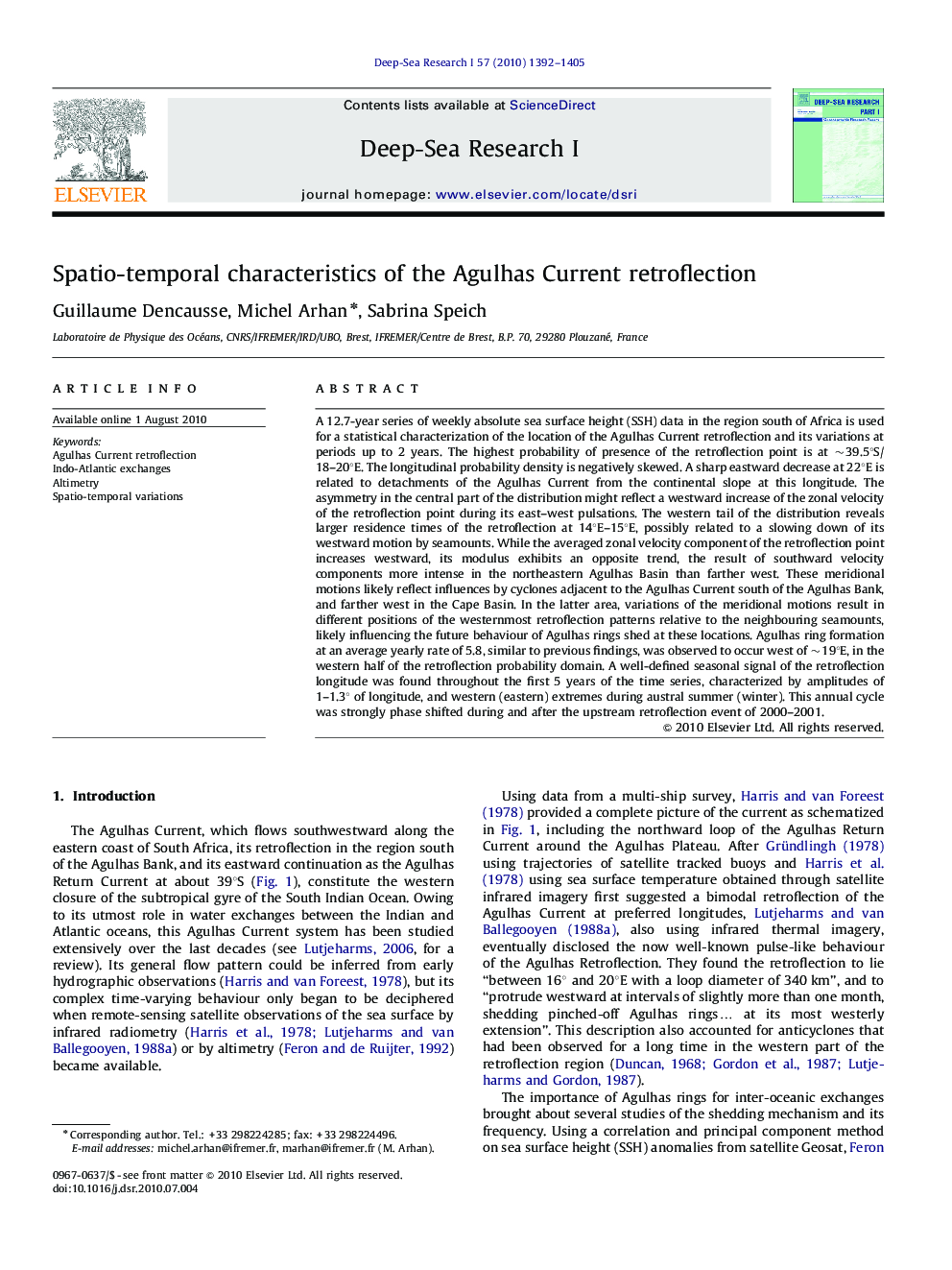| کد مقاله | کد نشریه | سال انتشار | مقاله انگلیسی | نسخه تمام متن |
|---|---|---|---|---|
| 4535176 | 1326089 | 2010 | 14 صفحه PDF | دانلود رایگان |

A 12.7-year series of weekly absolute sea surface height (SSH) data in the region south of Africa is used for a statistical characterization of the location of the Agulhas Current retroflection and its variations at periods up to 2 years. The highest probability of presence of the retroflection point is at ∼39.5°S/18–20°E. The longitudinal probability density is negatively skewed. A sharp eastward decrease at 22°E is related to detachments of the Agulhas Current from the continental slope at this longitude. The asymmetry in the central part of the distribution might reflect a westward increase of the zonal velocity of the retroflection point during its east–west pulsations. The western tail of the distribution reveals larger residence times of the retroflection at 14°E–15°E, possibly related to a slowing down of its westward motion by seamounts. While the averaged zonal velocity component of the retroflection point increases westward, its modulus exhibits an opposite trend, the result of southward velocity components more intense in the northeastern Agulhas Basin than farther west. These meridional motions likely reflect influences by cyclones adjacent to the Agulhas Current south of the Agulhas Bank, and farther west in the Cape Basin. In the latter area, variations of the meridional motions result in different positions of the westernmost retroflection patterns relative to the neighbouring seamounts, likely influencing the future behaviour of Agulhas rings shed at these locations. Agulhas ring formation at an average yearly rate of 5.8, similar to previous findings, was observed to occur west of ∼19°E, in the western half of the retroflection probability domain. A well-defined seasonal signal of the retroflection longitude was found throughout the first 5 years of the time series, characterized by amplitudes of 1–1.3° of longitude, and western (eastern) extremes during austral summer (winter). This annual cycle was strongly phase shifted during and after the upstream retroflection event of 2000–2001.
Journal: Deep Sea Research Part I: Oceanographic Research Papers - Volume 57, Issue 11, November 2010, Pages 1392–1405